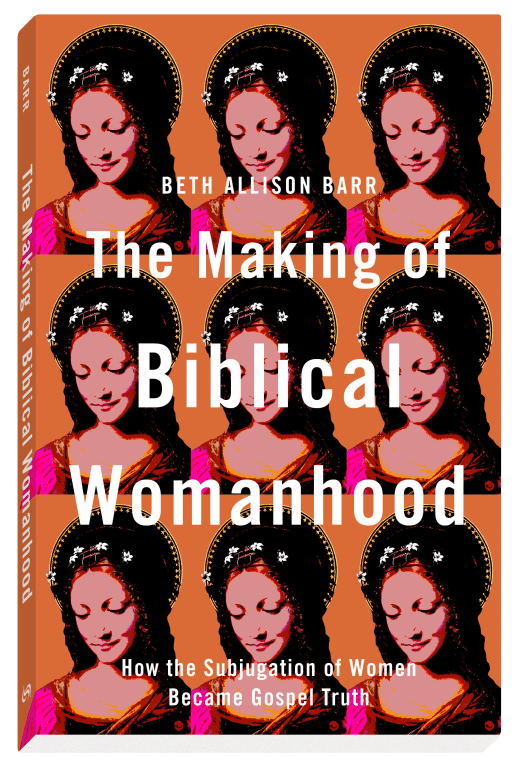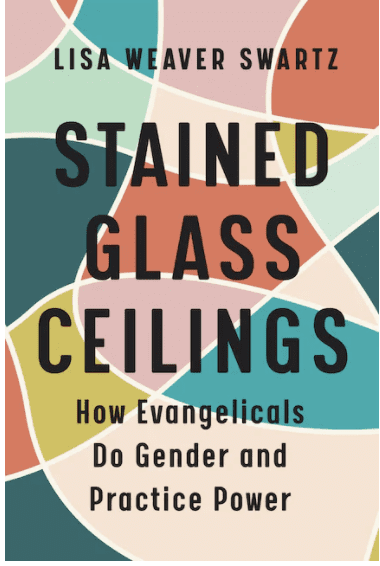I haven’t made it to the patriarchal bargain yet. We’ll save that for my first November post and follow it with a consideration of why patriarchy persists in egalitarian spaces. I will also tackle the difference (is there one?) between patriarchy and paternalism, which I think will spark some interest. Stay tuned as I continue this series in November.
Today I just want to build on my last post. I want to think harder about the circumstan ces in which women flourish in complementarian spaces. Is it really because complementarianism allows for the “maximum flourishing” of women? Or could it be that women exercise agency and flourish despite the limits around them? I explained in the 4th chapter of The Making of Biblical Womanhood (the Reformation chapter) how I often use “my own interpretation of Virginia Woolf’s phrase “a room of one’s own” to explain historical differences within the continuity of women’s lives.” It is one of my most effective classroom strategies, which is why I hope it might help here. Listen to what I argue:
ces in which women flourish in complementarian spaces. Is it really because complementarianism allows for the “maximum flourishing” of women? Or could it be that women exercise agency and flourish despite the limits around them? I explained in the 4th chapter of The Making of Biblical Womanhood (the Reformation chapter) how I often use “my own interpretation of Virginia Woolf’s phrase “a room of one’s own” to explain historical differences within the continuity of women’s lives.” It is one of my most effective classroom strategies, which is why I hope it might help here. Listen to what I argue:
“Women, throughout history, live within the confines of patriarchy. Bennett describes this as the patriarchal equilibrium. Regardless of how much freedom women have; they always have less than men. Yet the patriarchal equilibrium is a continuum, not a fixed standard. The boundaries of patriarchy wax and wane; the size of a woman’s room—the space where she is able to make her own choices—changes. Some women have bigger rooms, such as wealthy women with husbands and fathers among the highest social classes. Some women have smaller rooms, such as poorer women from families with little political and social influence. Historical circumstances, such as the aftermath of the Black Death in Europe, temporarily expanded women’s rooms by increasing their independence as wage earners, while other historical circumstances, such as Athenian democracy, made women’s rooms smaller.”
Women, in other words, can exercise agency and flourish within patriarchal structures—but the reasons why they are able to do so often have less to do with who they are and more to do with the circumstances in which they live. Women who luck out with bigger rooms have the potential to flourish more than other women.
Lisa Weaver Swartz’s Stained Glass Ceiling: How Evangelicals Do Gender and Practice Power (which releases very soon) drives this point home as she discusses her study of women at The Southern Baptist  Theological Seminary in Louisville, Kentucky. This is from the conclusion of her second chapter (which is what I mostly draw from in this post). Even though the seminary culture centers on white men, “white men do not, however, hold all the power.” As she explains, “the Seminary Wives Institute provides Southern’s most noteworthy example of this. The institute offers solidarity, collective identity, social support, and a rich, distinctively feminine spirituality, well suited to the lives of the women it serves. It also provides opportunities for leadership and religious agency.”
Theological Seminary in Louisville, Kentucky. This is from the conclusion of her second chapter (which is what I mostly draw from in this post). Even though the seminary culture centers on white men, “white men do not, however, hold all the power.” As she explains, “the Seminary Wives Institute provides Southern’s most noteworthy example of this. The institute offers solidarity, collective identity, social support, and a rich, distinctively feminine spirituality, well suited to the lives of the women it serves. It also provides opportunities for leadership and religious agency.”
There is a catch, though.
Weaver Swartz realized that even though all women at Southern had access to the “opportunities for leadership and religious agency” within “distinctively feminine” pathways and even though many women were “suited” for these pathways to leadership and authority, only some women were able to take advantage of them.
What made the difference for women at Southern? Marriage to the right kind of husband. “Marriage to a husband who is himself in a position of power, seems to be a de facto prerequisite to a complementarian woman’s leadership [in the context of Southern Seminary],” writes Weaver Swartz. “The women who teach for the Seminary Wives Institute, by definition, have this opportunity because their husbands are employed by the seminary. They not only teach about being wives, they teach because they are wives, married to the right men.”
Isn’t that interesting? Doesn’t it remind you about what we learned about the impact of marriage on Roman women like Regilla and Turia in my last post?
Of course, there are women who are not married to powerful men who exercise considerable power in complementarian circles. Kate Bowler explains in The Preacher’s Wife: The Precarious Power of Evangelical Women Celebrities how evangelical women gain “precarious power” through a variety of strategies, but we are going to hold off discussing this until my next post about the patriarchal bargain. For the moment I just want you to think about Weaver Swartz’s observation at Southern in the context of my “a room of one’s own” analogy. Yes, women flourish in complementarian spaces, even exercising considerable power and influence. But, like the women at Southern who married the right men, what if their flourishing is due more to lucky circumstances which have made their rooms bigger rather than because the system is inherently good for women’s flourishing?
Take, for example, the women who never feel called or gifted in ways that would cause them to hit the “stained glass ceiling.” These women do not feel constrained by the patriarchal limits in which they live–not because their aren’t limits on what they can do, but simply because they do not test those limits. As Weaver Swartz writes, “many of the women I interviewed at Southern [Theological Seminary] would feel misrepresented by descriptions of their lives in terms of male hegemony and female disempowerment. Attention to their experiences suggests that gender polarization can birth surprising gifts…it has created rich subcultural spaces that center women’s lives and amplify their voices.” Because complementarianism emphasizes gender distinctiveness for men and women, it makes rooms bigger for women who feel called to use their gifts within distinctly female lanes. “For such women,” Weaver Swartz concludes, “complementarianism’s benefits are real.”
Beth Moore provides an imperfect example of this (imperfect because Moore didn’t stay in her prescribed lane). But Moore did build her ministry during a time when complementarianism was strengthening in Southern Baptist circles, becoming one of the most well-known and influential SBC leaders. I think the boundaries she drew early on in her career—emphasizing that she was a woman called to women’s ministry and shying away from outward challenges to male authority (at least in the beginning)—helped her be successful. I don’t think Beth Moore drew these boundaries because she wanted to be successful; I think she drew them because she believed God had called her to minister to women. Even her clear focus on women, though, didn’t protect her from the “violence inherent in the system” which privileged male authority. (That is a quote from Monty Python and the Holy Grail, for those of you who didn’t catch it. I think it fits.) Many pastors regarded Beth Moore with suspicion (some even warning folk away from her), some SBC leaders openly spoke against her, and too many of her “brothers” treated her in demeaning ways. Nevertheless, Moore persisted, creating a ministry that continues to reach millions of women.
Beth Moore is an example of a woman who fought to make her room bigger; a woman who fought to live out her big calling in a small, tightly circumscribed space. She managed to “flourish” within the male-centered world of complementarian leadership, but not without paying a price. Indeed, one might even say she flourished in spite of complementarianism rather than because of it.
Could it be that some women who flourish in complementarianism do so because they push against the limits rather than staying in their lanes?
Well what about ordinary marriages? Do women flourish in ordinary complementarian marriages? Of course they do–but maybe not always for the reason you might think. Despite wedding vows requiring women to “obey” their husbands and marriage sermons filled with the Pauline household codes, complementarian marriages often function more like egalitarian ones–a trend Sally Gallagher and Christian Smith noted as early as 1999 and Russell Moore lamented in 2006.* Husbands and wives may pay lip service to male headship, but when it comes down to the practical moments of their marriages, they function more like a team.
Indeed, I suspect that most women and men who subscribe to complementarian theology do so not for the benefits it affords them but because they believe God created it (in the words of Mary Kassian) to “shine the spotlight on Christ’s relationship to the church (and the LORD God’s relationship to Christ).” Mature adults who love each other, who are committed to making marriage work, who are decent humans, and who believe their relationship reflects the relationship between Jesus Christ and his Church, focus more on the “beautiful” vision of the loving groom coming for his joyful bride than on the hierarchal power differential inherent in their relationship. For women in these marriages, “joyfully” submitting to the “servant-leadership” of their husbands works fine because they mostly function as equal partners. When problems do arise, even serious problems like abuse and neglect, the perpetrators are often considered anomalous and diagnosed as acting out because of individual sin.
The problem is flawed men who make bad choices rather than a system that enables, protects, and even platforms the flawed men who make bad choices. Right?
On the other hand, as we know all too well in the #ChurchToo era, benevolent complementarianism isn’t the whole story. While things work out okay for some women, they don’t for others. If you remember, I asked you to consider in my last post how women who live in bigger rooms do not see the more difficult lives of women who live in smaller rooms. “Patriarchy,” I wrote, “functions as a continuum—impacting some people more than others. I know the historical patterns of how patriarchy can reward those who support it and how women employ strategies to navigate it. I also know how the patriarchal continuum can obscure the harm it does: those who are impacted less do not always see the consequences for those it impacts most.”
Just think about the hundreds of women sexually assaulted and abused in Southern Baptist churches over a period of twenty years. They were victims standing in plain sight, surrounded by congregations of “flourishing” women and men who never saw them.
I can’t help but think that Judith Bennett’s words in her A Medieval Life: Cecilia Penifader and the World of English Peasants Before the Plague might be a good place to leave this post today (for those of you interested in medieval history, it is a great staring place). She writes that Cecilia Penifader, a successfully single woman who lived on a medieval English manor in the early fourteenth-century, was “born into a world where daughters were less valued than sons. She supported herself in an economy where women earned lower wages than men, got less training for skilled work, and received smaller endowments from their parents. She cooperated within a community that proscribed her from participating in its tithings, its pledging networks, and its offices. She relied on a social network that was smaller, narrower, and more focused on nearby neighbors and kin than those of many men. As the daughter of well-off parents, Cecilia forged a prosperous and comfortable life for herself, but she was, all things considered, an exceptionally lucky woman.”
Cecilia Penifader flourished in a patriarchal world just as evangelical women flourish in complementarian spaces. But the fact that they are flourishing doesn’t mean that patriarchy, complementarianism is good for women.
It just means that they might, “all things considered,” be lucky.
*Gallagher, Sally and Christian Smith. 1999. “Symbolic Traditionalism and Pragmatic Egaltiarianism: Contemporary Evangelicals, Families, and Gender.” Gender and Society 13(2): 211-233.
*Moore, Russell M. 2006. “After Patriarchy, What? Why Egalitarians are Winning the Gender Debate.” Journal of the Evangelical Theological Society 49:3: 569-576. https://www.etsjets.org/files/JETS-PDFs/49/49-3/JETS_49-3_569-576_Moore.pdf

















